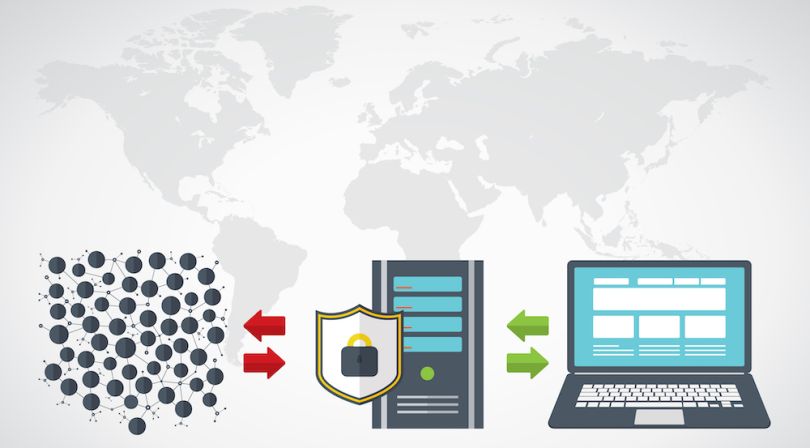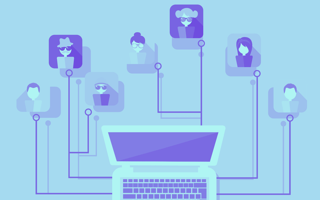In a way, global enterprises always work remotely. Take Atlassian: Founded in Sydney in 2002, the collaboration software company has offices in seven countries and even more time zones. With such a distributed workforce, the company stopped relying on in-person communication long before the coronavirus pandemic made it impossible.
“The way that we work as a company has to be very asynchronous,” Michael Pryor, head of Trello at Atlassian, told Built In. “The knowledge has to be stored in the tools.”
Of course, a distributed workforce is not the same as a fully remote one. Before coronavirus, only pockets of Atlassian — in total, about 8 percent of its 4,000 employees — worked remotely. The company was warming to remote work, though, inspired in part by Trello.
(In 2017, when Atlassian acquired Trello, the startup’s workforce was roughly 80 percent remote, which had given Trello an edge in recruiting.)
Okta, too, was remote-friendly before the pandemic struck. Roughly a third of the identity management company’s 2,200 employees worked remotely; swathes of the in-office team worked from home once a week or so.
Tips For Enterprise Companies Going Remote
- Utilize cloud-based applications
- Find a VPN workaround
- Create a remote-work playbook
- Remember that every team is different
- Continue to promote communication and collaboration
- Trust your employees
Neither enterprise had abandoned its offices entirely, though. Offices, after all, are social hubs, more conducive to team- and trust-building than video chat. Atlassian believes in the power of face-to-face contact so much, in fact, it has cardboard cutouts of remote employees at the office.
Not even Pryor, who has led majority-remote teams, sees remote work as a cure-all.
“I’m not saying [it’s] the future and everyone will work that way,” he said. “I think that there’s just advantages to being flexible.”
One unexpected advantage: When shelter-in-place orders rolled out across the globe, both Atlassian and Okta went remote seamlessly. Chris Flynn, Okta’s VP of IT employment enablement, told Built In that he didn’t have to make any major system edits to accommodate the shift.
“[Employees] don’t have to connect to anything differently than normal,” he said.
At many enterprises, though, this is more dream than reality right now. We asked Pryor and Flynn how their companies transferred seamlessly from headquarters to home offices at enterprise scale.

It helps to be a tech company...
Both Okta and Atlassian make cloud-based, remote-friendly software — so simply using their own products, or “dogfooding,” helps them gear up for a fully remote workforce.
“We call ourselves customer zero,” Flynn said.
By using Workforce Identity, for instance, Okta already had single sign-on and adaptive multi-factor authentication in place. This means one login grants employees access to all their work-related apps. However, that ultra-simple workflow requires more rigorous authentication in novel situations — say, a password and a response to a phone notification, instead of just a password.
The first time an Okta employee works from home, they may need to jump through extra security hoops; quickly and autonomously, though, Workforce Identity learns to trust employees’ home networks. Thousands of them.
At Atlassian, the entire product suite facilitates remote collaboration. Jira, for instance, helps teams collectively track projects and issues; Trello, meanwhile, functions as a work management hub for all times, offering a real-time visual overview of projects and team activity.
“You can add checklists and conversations and images and Google docs,” Pryor explained, of Trello.
“We do use a lot of our own tools,” he added. “That’s how we can [stay] in communication.”

...or at least to use all cloud-based applications
From an IT perspective, Okta has “no infrastructure,” Flynn said. “The path we’ve chosen as a company is to be cloud first for all the solutions that we provide our employees.”
That means the Okta team uses exclusively SaaS apps during the workday.
Most small companies, especially in the Bay Area, do the same. “They don’t want to spend the money building a data center when you can just rent it,” Flynn said. At the enterprise scale, though, companies can often afford on-premise data centers.
“Cloud isn’t for everyone, but it’s for most people.”
In some industries, where data privacy or infrastructure customization is absolutely paramount, this makes sense too. “Cloud isn’t for everyone,” Flynn said, “but it’s for most people.”
It has one especially clear advantage over on-premise data centers right now — it doesn’t assume an on-premise workforce.

VPNs can cause logjams, but they don’t have to
It’s not that on-premise data centers prevent remote work exactly. To connect to them, though, employees first have to connect to a virtual private network, which generates an encrypted remote connection to the on-site network.
But VPNs weren’t designed for a moment like this, when an enterprise’s remote headcount could abruptly jump from 1,000 to 20,000.
“You need to all of a sudden get a lot more licenses of the software,” Flynn said. “The infrastructure itself is probably not scaled to handle that ... it gets extremely taxed.”
But logjams aren’t inevitable — the right software tools can help. Okta, for instance, offers a product called Access Gateway, which “allows Okta to connect to on-premise applications and feed them up as if they’re cloud-based,” Flynn explained. “So you don’t need to VPN anymore.”

A remote work playbook can do wonders...
Especially at enterprise scale, codifying what Pryor calls the ideal remote work “practices and rituals” can prevent internal glitches. Back when Trello joined Atlassian, he helped the company develop a remote-work playbook.
It’s important, for instance, to “use technology to enable the same practices that you did in person,” he said. A weekly standup, for instance, might become a weekly video conference.
A word about video conferencing, though — even once we can work from offices again, Pryor recommends that teams dial into Zoom individually if they have even one remote employee. “You shouldn’t have one person on the screen remote and then one camera on 15 people who are in the room,” he said.
That might sound goofy, but it’s important to ensure remote workers don’t feel like second-class citizens. Instead, Atlassian aims at “putting everyone on the same level playing field when you’re using digital tools.”

...but don’t forget that each team is different
Especially at an enterprise scale, some teams rely on face-to-face interaction more than others. It’s not just the predictable facilities teams, either — even Okta’s San Francisco IT team faced some turbulence as shelter in place rolled out.
“We had to load up about 200 laptops into four different cars for our service desk folks,” Flynn said, “so that we could do things like new hire onboarding.” He never expected to see his team “take just gigantic stacks of laptops back to their house” so they could be staged and shipped to new hires.
It’s not just onboarding that posed challenges — support, too, has had to adapt to life without a physical support desk. Okta has turned to a tool called BeyondTrust Remote Support, which allows IT teams to take control of malfunctioning employee laptops remotely.
Obviously, though, this is an IT-specific tool. No matter how honed the remote work playbook, every team will need some custom software and policies too.

Collaboration and communication are key
Remote work strips away physical cues about availability, like open doors. Especially at the enterprise scale, where literally thousands of employees need to collaborate, it’s best for people to talk explicitly about their availability.
“You have to be more thoughtful about telling people when you’re going to be available [and] how you’re going to use tools,” Pryor said. For instance: Do you prefer Slack or email? During what hours do you keep Slack notifications on?
“You have to be more thoughtful about telling people when you’re going to be available [and] how you’re going to use tools.”
It’s also important to have a fleshed out communication tech stack, with a variety of options for different types of messaging. Atlassian and Okta both use Slack and Zoom for synchronous conversations, and email for slightly less pressing matters. Okta also uses a mix of Microsoft Office 365 and Google Suite for direct collaboration.
Atlassian, meanwhile, relies on Confluence, its document collaboration tool, for internal updates and announcements. Pryor describes it as “an internal blog mechanism,” where “our founders write articles ... and people vote them up” — a la Reddit — so employees see popular and relevant posts first.

Trust your employees
So-called “zero trust” security, like adaptive multi-factor authentication, is extra-important at enterprise scale — without it, a company is trusting literally thousands of people to safeguard its systems on instinct alone. But trust, too, is important.
“I think there’s a lot of mistrust about remote work,” Pryor said. “I saw a link the other day [to] boss spyware,” which allows managers to track their reports’ computer activity.
He doesn’t recommend it, even to enterprises with budget for it. In fact, one of the perks of remote work, he argues, is that it shifts focus from “physical presence” to “actual output.”
To prevent trust issues, he recommends face-to-face socializing. It’s especially important to continue for enterprises, where simply due to the size of the company, no one has met all their coworkers.
At Atlassian, that means weekly virtual happy hours, where employees “bring whatever [they’re] drinking and come and join the Zoom.” Ultimately, it’s easier to trust a face, even a digital one, than a green dot on Slack.




